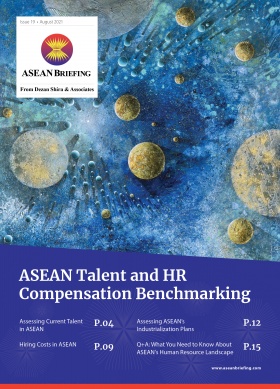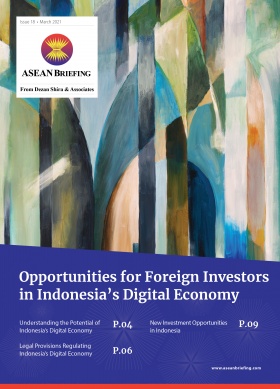The ASEAN-India Trade in Goods Agreement
The ASEAN-India Trade in Goods Agreement (the “Agreement”) is a trade deal between the ten member states of ASEAN and India.
ASEAN and India signed the Agreement at the 7th ASEAN Economic Ministers-India Consultations in Bangkok, Thailand in 2009. The Agreement, which came into effect in 2010, is sometimes referred to as the ASEAN-India Free Trade Agreement.
The Agreement has led to steadily increasing trade between ASEAN and India since its signing. In 2019-20, trade between India and ASEAN was worth US$86 billion. Though this represented a decline from US$97 billion in 2018-19 because of the COVID-19 pandemic, it was an increase from US$81.3 billion in the 2017-18 financial year.Here, we offer an overview of the Agreement and explain why it may be amended going forward.
Establishing a free trade area
The Agreement originated out of the Framework Agreement on Comprehensive Economic Cooperation between India and ASEAN created in 2003. As the title suggests, this framework agreement set the basis for India and ASEAN to negotiate future trade agreements.
The Agreement covers trade in physical goods and products; it does not apply to trade in services. ASEAN and India signed a separate ASEAN-India Trade in Services Agreement in 2014. Along with the ASEAN-India Investment Agreement, the three agreements collectively form the ASEAN-India Free Trade Area.
Once the Agreement came into force in 2010, it established one of the world’s largest free trade areas, covering a combined market of close to 1.8 billion people. Under the Agreement, ASEAN and India have committed to progressively eliminating duties on 76.4 percent of goods and to liberalize tariffs on over 90 percent of goods.
Eliminating tariffs on goods
Because of the uneven levels of development and differing economic policies within ASEAN, the Agreement applies two different classes of tariff rates depending on whether or not they are WTO members. Generally speaking, the Agreement grants less developed ASEAN members with less liberalized economies, such as Myanmar and Laos, a longer timeframe to reduce their tariffs.
Tariff reductions on “normal track” products have been completed for Brunei, Indonesia, Malaysia, Singapore, Thailand, the Philippines, and India. The Agreement requires Cambodia, Laos, Myanmar, and Vietnam will have their last “normal track” tariff reductions in place by December 31, 2021.
The Agreement allows the parties to maintain tariffs of four to five percent for some sensitive products. A number of these “sensitive track” products are still in the process of being lowered for Cambodia, Laos, Myanmar, Vietnam, the Philippines, and India. The last tariff reductions for “sensitive track” products are due for Cambodia, Laos, Myanmar, and Vietnam by December 31, 2024.
Moreover, the Agreement includes unique tariff reduction provisions for India’s “special products”, which are crude and refined palm oil, coffee, black tea, and pepper. By December 31, 2019, tariffs for these products were reduced to 37.5 to 50 percent, depending on the product.
Finally, parties are permitted to place some tariff lines into “highly sensitive lists” to manage tariff reductions for sensitive products, as well as an “exclusion list” for products excluded from the Agreement, which the parties must review annually.
Other provisions
In addition to reducing tariffs, the Agreement calls on all parties to establish predictable, consistent, and transparent trade practices to reduce non-tariff barriers. This includes simplifying customs procedures, ensuring permissible non-tariff measures are transparent, and preventing countries from instituting or maintaining non-tariff measures not in accordance with the WTO.
Other provisions in the Agreement include references to the ASEAN-India DSM Agreement for dispute resolution, exemptions for protecting security interests, and safeguard measures to protect against tariff cuts resulting in such significant import increases that foreign products overwhelm domestic ones.
What is next for the Agreement?
In 2020, the Indian government expressed its desire to review the Agreement. At the time, India expressed disagreements about RCEP trade deal negotiations, which included ASEAN, and dropped out of talks. The ASEAN side, however, indicated that it was prioritizing RCEP negotiations ahead of reviewing the Agreement.
Some Indian officials are concerned about the country’s trade imbalance with ASEAN and other Asian economies and fear that the Agreement disproportionately benefits ASEAN. The Indian government is especially interested in gaining greater market access into ASEAN’s automotive and agricultural sectors. Currently, India’s trade deficit with ASEAN is at about US$24 billion.
Obstacles to increased ASEAN-India trade include significant non-tariff barriers in India and several ASEAN markets, as well as incongruence between ASEAN goods and India’s supply chain. India’s Commerce and Industry Minister, Piyush Goyal, says that the elimination of non-tariff barriers and other obstacles would see ASEAN-India trade increase from about US$80 billion to US$200 billion.
Now that RCEP has been finalized – without India’s involvement – Indian and ASEAN trade representatives may give renewed attention to revisiting the Agreement in the near future.
About Us
ASEAN Briefing is produced by Dezan Shira & Associates. The firm assists foreign investors throughout Asia and maintains offices throughout ASEAN, including in Singapore, Hanoi, Ho Chi Minh City, and Da Nang in Vietnam, Munich, and Esen in Germany, Boston, and Salt Lake City in the United States, Milan, Conegliano, and Udine in Italy, in addition to Jakarta, and Batam in Indonesia. We also have partner firms in Malaysia, Bangladesh, the Philippines, and Thailand as well as our practices in China and India. Please contact us at asia@dezshira.com or visit our website at www.dezshira.com.
- Previous Article Cambodia Introduces New Pension Scheme
- Next Article Globaler Mindeststeuersatz für Unternehmen: Auswirkungen auf Singapur







